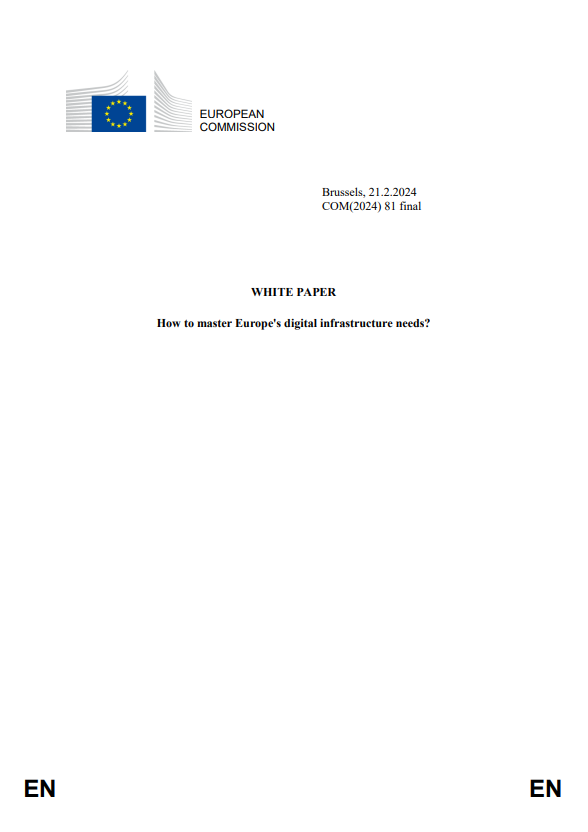
목차
1. INTRODUCTION 3
2. TRENDS AND CHALLENGES IN THE DIGITAL INFRASTRUCTURE SECTOR 5
2.1. Europe’s connectivity infrastructure challenges 5
2.2. Technological challenges 7
2.3. Challenges of achieving scale in EU connectivity services 10
2.3.1. Investment needs 10
2.3.2. Financial situation of the EU electronic communications sector 10
2.3.3. Lack of single market 12
2.3.4. Convergence and level playing field 15
2.3.5. Sustainability challenges 16
2.4. Need for security in the supply and in the operation of networks 17
2.4.1. Challenge of trusted suppliers 17
2.4.2. Security standards for end-to-end connectivity 17
2.4.3. Secure and resilient submarine cable infrastructures 18
3. MASTERING THE TRANSITION TO THE DIGITAL NETWORKS OF THE FUTURE - POLICY ISSUES AND POSSIBLE SOLUTIONS 20
3.1. Pillar I: Creating the “3C Network” - “Connected Collaborative Computing” 20
3.1.1. Capacity building through open innovation and technology capabilities 20
3.1.2. Way forward 22
3.1.3. Summary of possible scenarios 24
3.2. Pillar II: Completing the Digital Single Market 25
3.2.1. Objectives 25
3.2.2. Scope of application 25
3.2.3. Authorisation 26
3.2.4. Addressing barriers to core network centralisation 27
3.2.5. Radio spectrum 28
3.2.6. Copper switch-off 31
3.2.7. Access policy in a full fibre environment 32
3.2.8. Universal service and affordability of digital infrastructure 34
3.2.9. Sustainability 35
3.2.10. Summary of possible scenarios 36
3.3. Pillar III: Secure and resilient digital infrastructures for Europe 37
3.3.1. Towards secure communication using quantum and post-quantum technologies 37
3.3.2. Towards security and resilience of submarine cable infrastructures 38
3.3.3. Summary of possible scenarios 40
4. CONCLUSION 40



